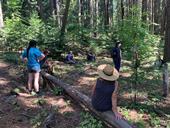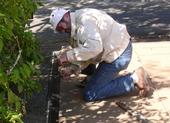- Author: Grace Nguyen-Sovan Dean

- Author: Grace Dean

The Forest Stewardship team has revamped their Forest Stewardship Story Map, first published in summer 2023. The new application hosts a slew of new features which provide a more user-friendly experience and allow users to learn about the forestry education programs offered by UC ANR.
The new application, built using ArcGIS Experience Builder, is live and can be viewed by clicking HERE.
Follow along as we go through the new Forest Stewardship Story Map, highlighting key new features, and giving voice to small forest...
- Author: Bill Stewart
The University of California Agriculture and Natural Resources (UCANR) publications office today announced the release of a new book, “Reforestation Practices for Conifers in California”, a practical manual for landowners and managers that explains the why, where, who, when, what, and how of getting sustainable forests back into California's diverse...
- Author: UC Berkeley Public Affairs
Reposted from UC Berkeley College of Natural Resources news
A Berkeley researcher in the Department of Environmental Science, Policy, and Management travelled to Washington, D.C., to testify on Tuesday before the U.S. House Subcommittee on Energy and the Subcommittee on Environment and Climate Change.
The hearing, titled “
- Editor: Sophie Kolding
- Author: Susie Kocher

Most people planning home improvement projects take into account how improvements will affect the home’s ability to withstand rain and weathering. In California we should also consider the threat of wildfire when planning home improvement projects this spring
Most homes that burn during wildfires are ignited by flying embers landing on combustible material on or near homes. A wildfire passes by a home quickly, usually in a few minutes, while the exposure to flying embers can last for an hour or more. Therefore, activities homeowners undertake to make their home less ignitable from embers do the most to ensure its survival.
The most important home upgrade homeowners can do to reduce wildfire risk is to replace wood...


